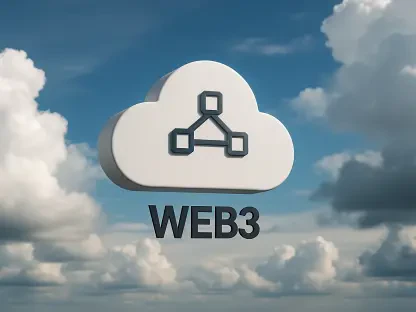Imagine a scenario where a routine cloud account migration turns into a financial nightmare, with budget alerts skyrocketing and no clear explanation in sight, leaving Microsoft Azure customers in distress. This is the reality many faced during a recent transition from the Microsoft Online Subscription Program (MOSP) to the Microsoft Customer Agreement (MCA). Erroneous cost projections sent shockwaves through user communities, sparking debates on cloud reliability and provider accountability. This roundup dives into diverse perspectives from industry voices, affected users, and tech forums to unpack what went wrong, how it was perceived, and what can be learned from the debacle. The aim is to provide a balanced view of the incident, offering insights and tips for navigating similar challenges in cloud services.
Unpacking Diverse Reactions to the Migration Glitch
The sudden spike in forecasted costs during the Azure account migration left many users reeling, with some reporting budgets ballooning far beyond expected limits. Social media platforms and tech communities buzzed with accounts of automated warnings showing drastic overages, creating widespread alarm. A common thread among user feedback was the initial confusion over whether these figures represented actual billing or mere projections, highlighting a critical gap in clarity during the transition process.
Contrasting opinions emerged on the severity of the issue. While some users expressed outrage over the unexpected alerts, others noted a sense of relief upon learning that actual invoices remained unaffected. This split in sentiment underscores a broader discussion on how much weight businesses place on forecast accuracy versus final billing data. The incident revealed varying levels of tolerance for technical errors among Azure’s diverse customer base, from small enterprises to large corporations.
Industry observers weighed in with a more analytical take, pointing out that such migration hiccups are not uncommon in large-scale cloud transitions. Many emphasized that while the error was significant, it also served as a reminder of the complexities involved in updating subscription frameworks across millions of accounts. Their perspective often leaned toward patience, suggesting that isolated incidents like this should not overshadow the platform’s overall stability, though they urged better safeguards in future rollouts.
Exploring Communication Shortfalls: What Users and Analysts Say
Frustration Over Delayed Updates
A major point of contention among affected Azure users was the lack of proactive communication from the provider during the migration mishap. Many shared stories of discovering the cost discrepancies through automated alerts rather than official announcements, leading to unnecessary panic. This sentiment was echoed across online discussions, where the absence of timely updates became a focal issue for administrators seeking reassurance.
Analysts in the cloud computing space offered a slightly different angle, acknowledging that communication lapses are a recurring challenge during large-scale updates. They suggested that the scale of Azure’s user base might contribute to delays in personalized notifications, though they also stressed that automated systems should not be the first point of contact for critical errors. Their insights point to a need for tiered communication strategies that prioritize urgent issues like cost forecasting.
Some user communities proposed practical workarounds, such as setting up independent monitoring tools to cross-check Azure’s cost dashboards during migrations. This advice reflects a growing sentiment that businesses must take proactive steps to protect themselves from provider-side oversights. It also highlights a divide between those who expect full transparency and those who are willing to adapt to imperfect systems with their own solutions.
Support Accessibility: A Mixed Bag of Experiences
Access to effective support during the incident drew mixed reviews from the Azure user base. Numerous accounts detailed struggles to connect with human representatives, often being routed through automated responses that failed to address specific concerns. This frustration was particularly acute for smaller businesses lacking dedicated IT teams to navigate complex support channels.
On the flip side, a smaller subset of users reported eventual success in resolving their queries through persistent follow-ups or escalated tickets. These experiences suggest that while support infrastructure exists, its efficiency varies widely depending on the nature of the issue and the user’s persistence. Such disparities have fueled discussions on whether cloud providers should invest more in accessible, real-time assistance during crises.
Tech industry commentators have noted that support challenges are not unique to Azure, often citing similar feedback across competing platforms. Their analysis suggests that as cloud adoption grows, providers must scale their customer service capabilities to match, potentially through AI-driven support tools balanced with human oversight. This perspective offers a forward-looking approach to addressing systemic gaps in user assistance.
Forum Moderation: Transparency in Question
Concerns over transparency surfaced as some users reported critical feedback being removed from official support forums, raising eyebrows about moderation practices. Community discussions highlighted a sense of distrust, with many questioning whether such actions were meant to downplay the migration issue’s impact. This reaction points to a deeper unease about how criticism is handled in public-facing channels.
Comparatively, opinions from tech policy watchers suggest that forum moderation varies widely across the industry, often influenced by regional norms and corporate policies. They argue that while curating feedback can maintain constructive dialogue, overzealous filtering risks alienating users who value open discourse. This balance remains a contentious topic, with no clear consensus on best practices.
User advocacy groups have chimed in, urging cloud providers to adopt clearer guidelines on forum interactions. Their stance is that transparency in handling criticism could serve as a trust-building measure, especially post-incident. These differing views collectively underscore the need for a standardized approach to managing public feedback during technical disruptions.
Lessons Learned: Tips from the Community and Beyond
Drawing from the array of perspectives, several key lessons stand out for Azure users and cloud adopters at large. The incident exposed vulnerabilities in relying solely on provider-generated alerts for financial oversight, prompting many to recommend regular manual checks of cost dashboards. This tip emerged as a practical takeaway from user forums, where shared experiences emphasized self-reliance during migrations.
Analysts and seasoned administrators also advise establishing direct support contacts well before critical updates occur, ensuring quicker access to assistance if issues arise. This proactive measure contrasts with the reactive frustration seen in many user accounts, offering a way to mitigate communication delays. It reflects a broader call for businesses to build redundancy into their cloud management strategies.
Finally, there’s a collective push for greater accountability from cloud providers, with some industry voices suggesting that users demand detailed migration roadmaps and contingency plans. This advice aims to shift the dynamic toward shared responsibility, encouraging companies to prepare internal protocols for unexpected disruptions. Together, these insights form a toolkit for navigating the uncertainties of cloud transitions.
Reflecting on the Incident: Next Steps for Cloud Users
Looking back, the Azure migration mishap stirred significant unrest among users, with faulty cost projections and communication gaps leaving a lasting impression. The diverse opinions gathered—from frustrated administrators to pragmatic analysts—painted a complex picture of trust, accountability, and technical reliability in cloud services. The incident became a catalyst for broader conversations about how providers and customers can better align during periods of change.
Moving forward, businesses are encouraged to invest in independent monitoring tools and foster stronger relationships with support teams to preempt similar surprises. Cloud providers, on the other hand, might consider revamping their update protocols to prioritize real-time transparency and accessible assistance. These steps could pave the way for smoother transitions in an era where digital infrastructure is non-negotiable.
As a final consideration, exploring additional resources on cloud migration best practices could empower users to stay ahead of potential pitfalls. Engaging with community-driven forums and industry reports offers a chance to learn from collective experiences, building resilience against future challenges. This incident, while disruptive, opened the door to actionable improvements for all stakeholders in the cloud ecosystem.









